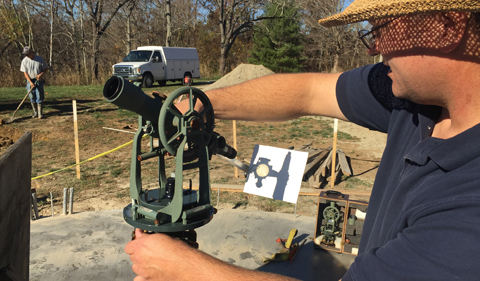
Mike Myers
Mike Myers, a Mechanical System Technician from Physics & Astronomy visited the Ohio University Observatory construction site recently to take measurements to position Ohio University’s refurbished 10-inch Fecker telescope during installation and use.
The axis of the telescope will be in line with the polar axis of the Earth in order for the telescope to track celestial bodies accurately.
Myers uses a theodolite to help determine the orientation of the telescope. A theodolite is a precision instrument used for measuring angles both horizontally and vertically.
“I use the theodolite at intervals,” Myers explains. “The first orientation markings were made for excavation and to orient the base plate for the telescope. They were later checked with a 3-D GPS by a surveyor. Another measurement with the theodolite helped us to achieve a set of highly accurate marks to help us to align the telescope when it is installed. Final calibration of the telescope position will be done by using the telescope itself to track celestial bodies.”
The observatory is located at the periphery of the Athens campus, near The Ridges water tower. When completed, the facility will augment capabilities for undergraduate instruction and public outreach. A formal opening of the observatory is scheduled for Saturday, May 6, 2017. The time will be announced closer to the event.
How the Tool Works
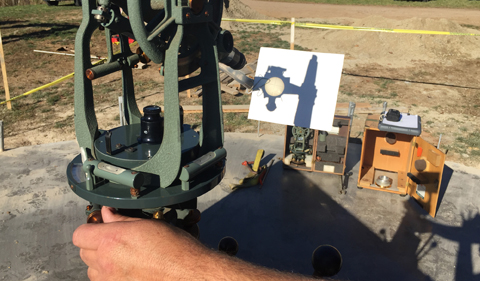
Myers uses a theodolite to locate the polar axis of the Earth by tracing the sun at two points equidistant in time before and after “solar noon.” The longer the period of time between observations, the greater the accuracy. Solar noon is the time of day when the sun crosses the meridian and is at its highest elevation in the sky. The local time of solar noon depends on the longitude and date.
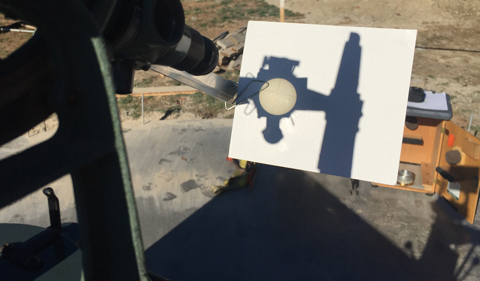
The white paper index card is used as a target to focus the image of the sun within the cross hairs of the scope. The horizontal protractor calibrates to zero at the point of the first reading. A second vertical protractor is locked onto the angle of the sun at the first reading.
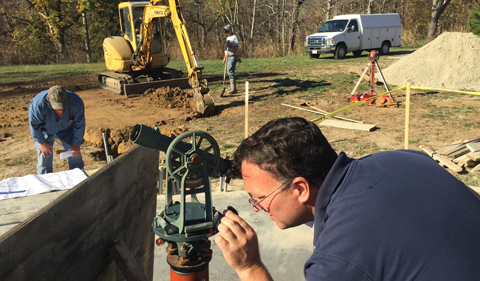
Myers uses the sun’s projection and the horizontal protractor to obtain the degrees, minutes, and seconds reading. He divides the reading measurements from the horizontal protractor in half. This number indicates the direction of the polar axis.
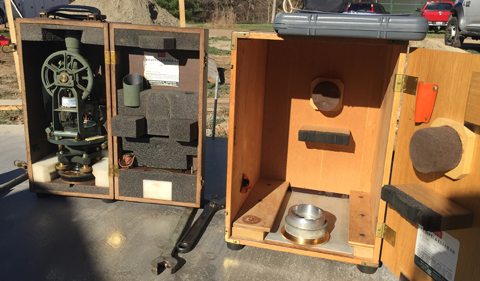
The toolboxes contain two kinds of theodolites. They are used to take the same measurements, but one is tailored for precision alignments of machines such as telescopes; the second theodolite is used for geodetic, or geographic, survey work. It serves as a back-up device for precision measurements.
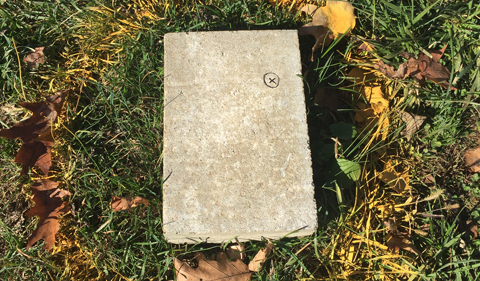
The small bull’s eye target is used as a temporary reference point to set up the second theodolite. Myers established this point the day the contractor broke ground. It serves as the initial reference for the orientation of the telescope.
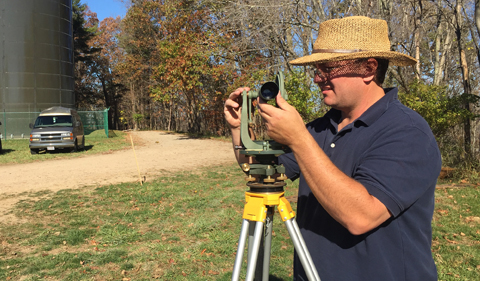
Once positioned over the target, the second theodolite is used to verify measurements from the first reading.
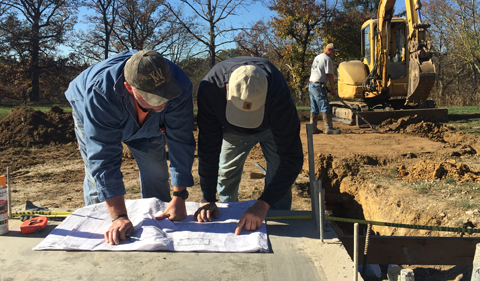
Meanwhile, contractors consult observatory blueprints to prepare the site for a concrete foundation.
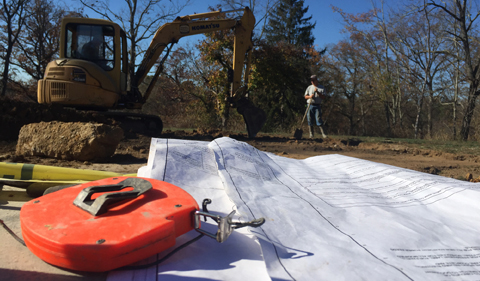
Construction is expected to continue through February 2017. Telescope installation will take place as weather permits throughout the spring.



















Comments